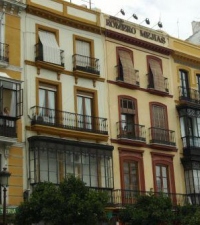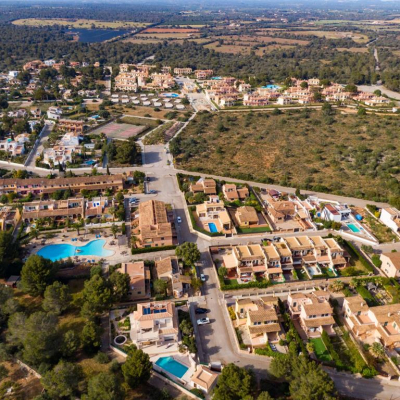Guide to buying Spanish property

Whether you fancy sipping rioja on a breezy northern clifftop, or relaxing by the Med, promises of sunshine, friendly locals and a slower pace of life continue to draw expats to Spain. House prices have fallen by almost 40% since 2007 and good value properties are available all over the country. You just have to be careful what you buy.
- Rent first
Lively summer towns can lose their appeal when winter sets in. Rent out of season to get a preview of life in the downtime.
- Be clear about your motivation
Do you want a home, or an investment? Capital growth is only realistic today with a long term view and an excellent location. Prices have fallen by around 8.1% every year since 2007 and with so much resting on the Eurozone debt crisis the market remains uncertain. Yet if you want a beautiful place to live, or a long-term holiday property to rent out, there are some fantastic opportunities right now.
- How do you feel about expats?
Having other expats close by can be an attraction or a shortcoming depending on your point of view. If you’d rather be the only expat in the village, work on your Spanish. The locals are usually tolerant of learners, but it’s easy to feel isolated if you can’t have a proper conversation with your neighbours.
You can link up with other English-speaking people in an area using expat forums.
- Avoid ghost towns
The global recession stalled many new developments in Spain. Complexes billed as luxury resorts ended up half-finished, with transport links missing, or villas left empty. Steer clear by spending time in an area before you buy, testing out local amenities and talking to locals.
- Consider annual renting potential
A property’s rental potential is largely dependent on whether it draws holidaymakers outside peak season. A self-catering villa in Tenerife can be rented for about 10 months of the year. It’s almost impossible to get the same level of income from a more typical May to September property. Golf courses also attract people out of season and tend to add another 10 or 15 weeks to a property’s renting potential.
- Understand the Spanish legal system
The Spanish buying process can be very different from other countries. Spaniards don’t usually use lawyers to move house. They go straight to an official called a notary who transfers deeds and arranges for transfer taxes to be paid. The danger with this is that the notary does not represent your interests – they have to be impartial. Neither do they perform the kind of searches that happen in the UK before a deal goes through.
This means that if there are any financial or legal burdens affecting the property you may not be fully aware of them and end up taking them on. You can employ a specialist independent solicitor to investigate things like property debts, planning issues and rights of way.
- Beware property debts
If the current owner has a mortgage or charge on the property that does not get removed before the deeds are transferred then you inherit the debt under Spanish law. You might not get a chance to spot this if you authorise someone else, such as an Estate Agent or the seller’s representative, to sign documents on your behalf.
- Check out planning permission
If parts of a property have been built without planning permission they are at risk. Unauthorised swimming pools get filled in by the authorities and whole houses built without planning permission have even been bulldozed. Get independent legal advice to check the paperwork’s correct.
The Spanish planning process is slow, bureaucratic and sometimes painful. Seek professional advice and get started well in advance if you need permission for improvements.
- Watch out for tax traps
Tax dodging has been a national sport in Spain, but the clampdown has arrived. For decades there’s been a common habit of under-declaring the value of a property to avoid stamp duty. Any seller who under-declared when they bought the property will want you to do the same; otherwise they’ll be left with a hefty capital gains bill.
Sellers may put pressure on you to under-declare by tempting you with lower stamp duty, but you could be the one left holding the baby as the Spanish Government closes its loopholes to claw back its public finances.
- Decide whose name a property should be under
There are often opportunities to save taxes by putting the property in the name of a lower rate tax payer in a family. To make the most of these opportunities steps need to be planned before you complete your purchase.
- Managing agents
Be careful who you choose to manage a rental home. Visit other properties on the agency’s books to see what kind of standards they keep.
Get a clear written agreement which allows you to kick the agent into touch if they’re not performing.
And if you really want to know what’s happening instal a telephone in the house and ring it every week. This way you’ll find out if someone’s staying in the property and you’re not being paid for it.
- Useful resources
www.SpanishPropertyInsight.com is a good web forum run by English journalist Mark Stucklin. Also try the magazines Living Spain & A Place in the Sun. Check whether the agent or developer you are dealing with is a member of the Association of International Property Professionals (www.aipp.org.uk).
Popular Beach Areas
Costa Brava – Attracts well—heeled Brits in their 40s and 50s. Typical properties are large villas costing €500k upwards. Small pied-à-terres in Barcelona are popular for weekend retreats.
Costa Blanca – Full of bargains. You can get a little piece of sunshine for around €40k in places like Torrevieja. There are large expat communities and most areas are fairly crowded but you can still fit a small swimming pool in the garden. Tends to be busy in summer, and quite a bit quieter in winter.
Costa de la Luz – At the turn of the millennium developers started to convert marshland into well-designed leafy complexes in places like Ayamonte. They remain popular amongst a mixed crowd.
Costa Calida – Developers tried to mimic the success of neighbouring Costas, but instead created a bubble. Brand new mini towns on large golf resorts were constructed. Everything stalled around 2007-8 and early buyers were left in half-finished ghost towns.
Costa del Sol – Marbella, Puerto Banus and Fuengirola provide Spain’s answer to The Only Way is Essex - glamorous and fun but not everyone’s idea of good taste. The prices are quite a bit higher than the Costa Blanca.
Sotogrande – The western part of the Costa del Sol is an altogether more upmarket story. Life revolves around Sotogrande’s polo fields and marina and properties are marketed by well known global property consultants. Golf courses provide an additional attraction.
By Dennis Phillips, a bilingual solicitor at Mayo Wynne Baxter who specialises in international property and inheritance law.
- My Life Abroad -
A selection of expat stories

"A fun compulsive read!"
J. Matcham, Amazon
"I strongly advise people ready to live abroad to read this book!"
Patrice, Amazon

 Finding an area in Spain
Finding an area in Spain Renting in Spain
Renting in Spain The Ultimate Guide: Buying Real Estate as an Expat
The Ultimate Guide: Buying Real Estate as an Expat  Embassies and Consulates in Spain
Embassies and Consulates in Spain Why using an alternative broker for large money transfers
Why using an alternative broker for large money transfers